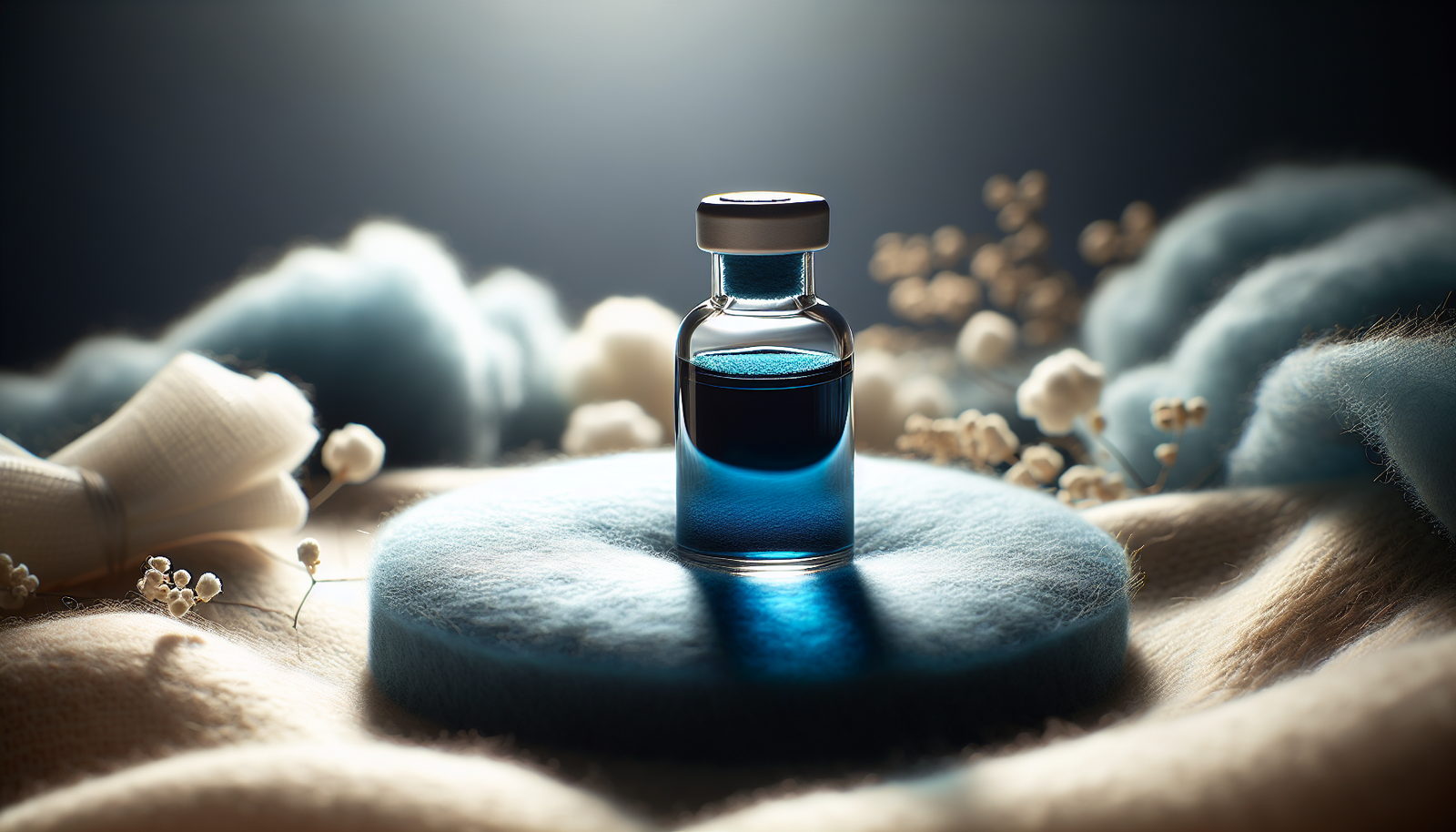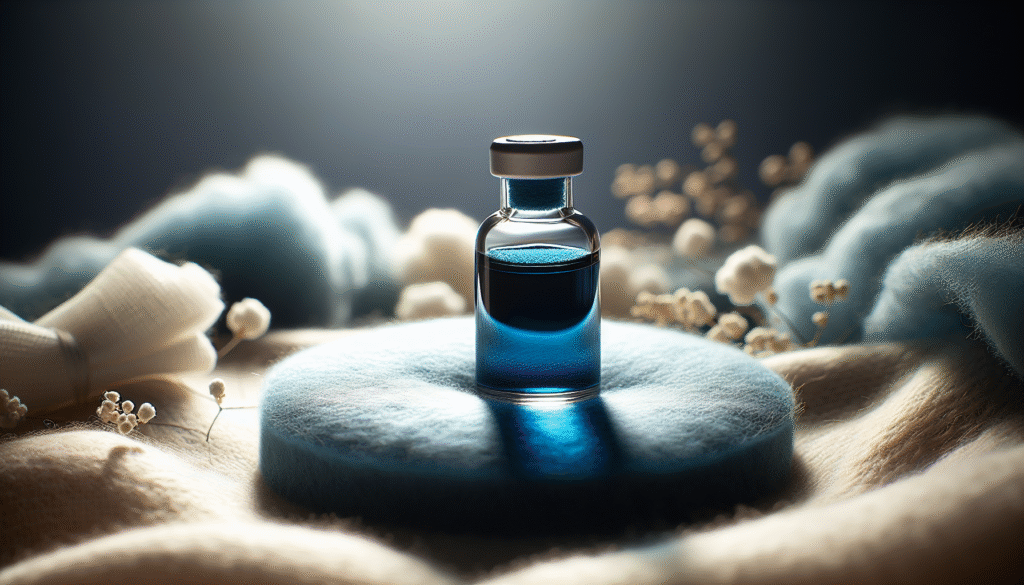
What if there were an innovative solution capable of transforming the way you approach skin care and wound healing? Methylene blue, a compound often associated with scientific research and medical applications, is emerging as a powerful ally in maintaining healthy skin and facilitating wound recovery. The following sections will uncover the various benefits of methylene blue and how it can serve as a cornerstone in your skin care regimen and wound healing process.
Understanding Methylene Blue
Methylene blue is a synthetic dye that has a long history in medicine, dating back to the 19th century. Initially used as a textile dye, it later gained prominence as an antiseptic and a treatment for conditions like malaria and methemoglobinemia. Its unique properties—antioxidant capabilities, antimicrobial effects, and cellular metabolism enhancement—have garnered attention in dermatological studies.
Mechanism of Action
To appreciate the benefits of methylene blue, it is important to understand how it works at a cellular level. It operates primarily through two mechanisms:
- Antioxidant Properties: Methylene blue helps mitigate oxidative stress by scavenging free radicals. This action protects skin cells from damage caused by environmental factors such as UV radiation and pollution.
- Enhancement of Cellular Respiration: By participating in mitochondrial respiration, methylene blue enhances cellular energy production, facilitating the healing process in skin cells.
Benefits of Methylene Blue for Skin Health
Using methylene blue can provide significant advantages for your skin. Understanding these benefits can help you harness its potential effectively.
1. Antimicrobial Effects
Methylene blue has notable antimicrobial properties that can combat various pathogens, including bacteria and fungi. This feature is particularly beneficial for individuals dealing with chronic skin issues or infections. By applying methylene blue topically, you can reduce the risk of infection in open wounds or compromised skin.
2. Anti-Aging Properties
Oxidative stress is a significant contributor to premature aging, manifesting as wrinkles, fine lines, and dull skin. The antioxidant capabilities of methylene blue help protect your skin from oxidative damage, promoting a youthful appearance and enhancing skin texture.
3. Wound Healing Acceleration
Numerous studies indicate that methylene blue can speed up the wound healing process. Its ability to boost cellular metabolism facilitates quicker tissue regeneration, allowing your skin to repair itself more effectively. The compound can activate pathways responsible for healing, making it a valuable addition to post-surgical care or treatment for chronic wounds.
4. Skin Tone Improvement
Even skin tone can significantly impact your overall appearance. Methylene blue has been found to promote brighter skin and a more even complexion. By inhibiting processes that lead to hyperpigmentation, it helps in reducing dark spots and promoting a radiant glow.
5. Anti-inflammatory Effects
Inflammation often underlies many skin concerns, such as acne, rosacea, and eczema. Methylene blue exhibits anti-inflammatory properties, offering a soothing effect on irritated skin. By incorporating it into your routine, you may find relief from redness and discomfort associated with various dermatological conditions.

How to Use Methylene Blue for Skin Care
Before incorporating methylene blue into your skincare routine, it’s important to understand how to use it effectively. Here are the recommended methods for application:
Direct Application
For targeted treatment of wounds or specific skin conditions, consider using a diluted solution of methylene blue directly on the affected area.
- Dilute the Solution: Mix methylene blue with a carrier such as distilled water or a suitable oil to achieve a safe concentration.
- Apply Gently: Using a clean cotton ball or your fingertips, apply the solution to the affected area, ensuring even coverage.
- Frequency: Depending on the severity of the condition, it’s advisable to apply the solution 1-2 times daily.
Incorporation into Skincare Products
Various skincare products now feature methylene blue as a key ingredient. When choosing a product, look for those formulated with additional skin-loving ingredients that complement the properties of methylene blue.
- Serums: Lightweight serums often contain methylene blue combined with hyaluronic acid or peptides for enhanced hydration and anti-aging benefits.
- Creams and Ointments: Look for moisturizers that provide both hydration and healing properties, which may be beneficial for post-treatment recovery.
Precautions
While methylene blue is generally considered safe for topical use, certain precautions should be taken:
- Patch Test: Conduct a patch test on a small area of skin before full application to check for allergic reactions or sensitivity.
- Avoid Substantial Exposure: Methylene blue can stain clothes or surfaces, so be cautious during application.
Compared to Other Treatments
Methylene blue has unique benefits compared to other common skin treatments. Understanding these differences can help you make informed decisions about your skincare regimen.
| Treatment | Methylene Blue | Traditional Antiseptics | Antioxidant Serums | Retinoids |
|---|---|---|---|---|
| Antimicrobial Action | Strong | Varies | Minimal | Not applicable |
| Wound Healing Speed | Fast | Moderate | Slow | Not applicable |
| Skin Tone Improvement | Yes | Limited | Yes | Varies |
| Anti-Aging Properties | Yes | No | Yes | Yes |
| Side Effects | Minimal | Potential irritation | Varies | Common (dryness, peeling) |

Evidence and Research Supporting Methylene Blue
Research has shed light on the various effects and benefits of methylene blue for skin health. Here’s a closer look at some compelling studies:
1. Antimicrobial Research
A study published in the journal Dermatology demonstrated that methylene blue effectively inhibited the growth of bacteria such as Staphylococcus aureus and Escherichia coli, common pathogens involved in skin infections.
2. Wound Healing Studies
In a controlled trial examining wound healing, researchers found that wounds treated with methylene blue gel healed significantly faster than those treated with standard ointments. The results suggested enhanced collagen synthesis and reduced inflammation as contributing factors.
3. Anti-Aging Properties
Another study in the American Journal of Dermatology highlighted the antioxidant effects of methylene blue, showing its ability to reduce markers of oxidative stress in human skin cells. This underscores its potential role in anti-aging applications.
Considerations for Treatment
Before deciding to use methylene blue for skin health, a few considerations should be taken into account:
Skin Condition Specificity
Different skin conditions may respond uniquely to methylene blue. It is essential to consult a dermatologist or healthcare provider to ascertain whether methylene blue is suitable for your specific condition.
Combination with Other Treatments
In some cases, methylene blue may enhance the effects of other treatments, while in others, it may not be advisable to use it simultaneously with certain medications or topical agents. Your healthcare provider can offer personalized guidance based on your skin type and concerns.
Individual Responses
Every individual’s skin is different, and responses to methylene blue can vary. Monitoring your skin’s reaction after introduction into your routine is essential to determine its effectiveness and tolerability.
Conclusion
Considering the evidence presented, methylene blue emerges as a compelling option for those seeking to enhance their skin health and accelerate wound healing. Its multi-faceted approach—offering antimicrobial effects, accelerating wound healing, and providing anti-aging benefits—demonstrates its potential as an indispensable tool in modern skin care.
As with any new treatment, you are encouraged to approach its usage with care and ideally under the supervision of a qualified professional. By doing so, you can maximize the benefits while minimizing potential risks. Whether you are dealing with chronic skin conditions, recovering from an injury, or simply seeking to enhance your skincare routine, methylene blue could very well be the revolutionary ingredient you have been seeking. Take the next steps towards healthier skin by considering the integration of methylene blue into your regimen.